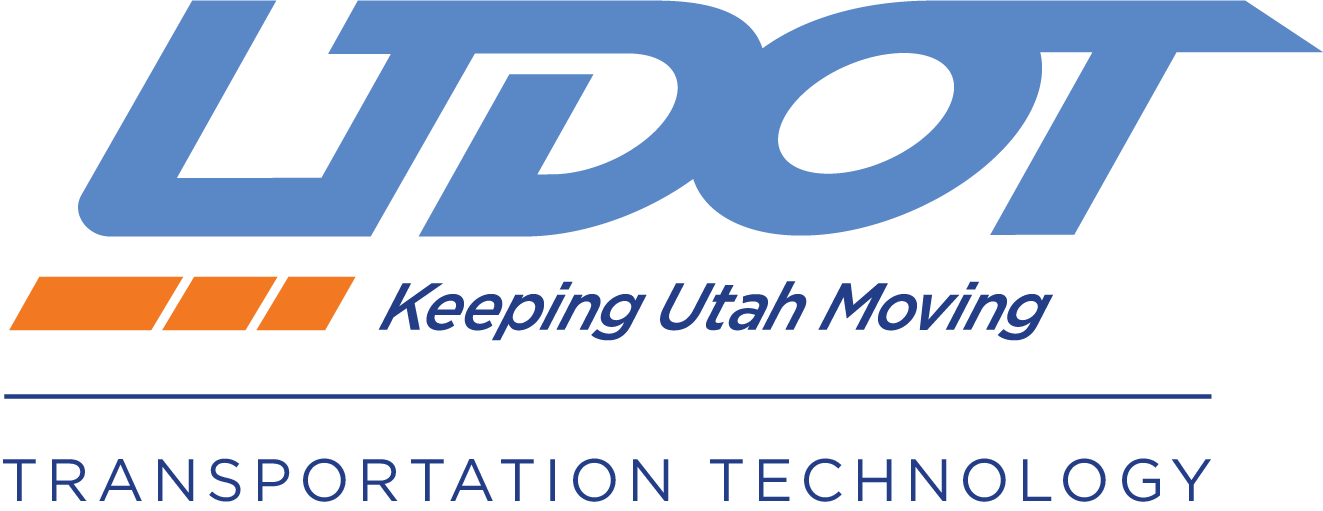Connected Vehicle Ecosystem
Connected vehicles are vehicles that can talk with each other and with the roadside infrastructure – sharing information that can warn of hazards and report road conditions. These wireless systems have been envisioned for 25 years and are now coming into reality. Connected vehicles promise to prevent crashes, save lives, and improve traffic efficiency.
UDOT has been involved in planning for, and deploying connected vehicle (CV) technology for about 15 years for the main purpose of supporting its goal of Zero Fatalities. A Connected Vehicle Ecosystem includes specialized radios along the roadside and in vehicles, software apps to facilitate communication between these radios, and tools to analyze and process the data that flows between these elements. The goal is to share data that will prevent crashes and help vehicles move more efficiently.
Beginning in 2015, UDOT began to install connected vehicle elements on a small scale to demonstrate its capabilities and benefits. These early projects enabled UTA buses and UDOT snowplows to communicate with UDOT’s traffic signals and request more ‘green time’ at signalized intersections – making these vehicles more efficient. As the system grew, UDOT began to develop apps to warn drivers of potentially icy roads or impending sharp curves. UDOT also collaborated with other agencies around the country, and with automakers, to encourage broad deployment of these important safety systems.
The video below, presented at a national Vehicle-to-Everything (V2X) Summit in August 2022 in Washington, D.C., summarizes UDOT’s connected vehicle deployments and provides insights about how this technology can become mainstream around the country.
As UDOT, and other local and national agencies, continue to expand connected vehicle technology, we can begin to realize the safety and mobility promises of this innovative technology. Data shared between the vehicles and the roadside can inform drivers of hazardous conditions and assist UDOT operators in their role of monitoring and managing highways throughout our state. Every crash prevented, and every life saved, will make the investment in this system worthwhile.
To learn more about the technology and how it works, see our Technology FAQ page.
Connected Vehicle Data Ecosystem
UDOT has been involved in planning for, and deploying connected vehicle (CV) technology for about 15 years for the main purpose of supporting its goal of Zero Fatalities.
Connected Vehicle Speed Warning Systems
The Curve Speed Warning system employs vehicle-to-infrastructure (V2I) communication to warn drivers about upcoming curves in the roadway.
Transit Signal Priority
To help improve the reliability of bus schedules, Utah Transit Authority (UTA) transit buses are connected to traffic signals through dedicated short-range communication (DSRC) radios along selected corridors. A bus that is behind its published schedule by a certain threshold can be granted additional green light time at these connected traffic signals.
Snowplow Preemption
Quick removal of snow from our roadways is a key to safety. Connected snowplows can request signal preemption at intersections where the vehicle is actively plowing snow. This allows the plow to keep moving through the intersection. Efficient use of snow plow operations can significantly reduce crashes along urban corridors.
Connected Vehicle Spot Weather
The Connected Vehicle (CV) Spot Weather Impact Warning system employs vehicle-to-infrastructure (V2I) communication to advise travelers about road condition information.
